What is an RRID?
RRID stands for Research Resource Identifier. It is a persistent and unique identifier for research resources, designed to standardize their citation in scientific literature. RRIDs facilitate the identification and tracking of resources, enhancing research transparency, reproducibility, and resource traceability.
In research papers, authors often use abbreviations or inconsistent nomenclature when citing resources. For example, a paper using the BD CellQuest Pro software might refer to it as "CellQuest," "CellQuest Pro," or "CellQuest (BD Biosciences)." RRIDs provide a unique identifier linked to a standardized name, ensuring unambiguous identification of the resources used and improving research reproducibility.
The current RRID system covers key research resources including antibodies, cell lines, plasmids, model organisms (e.g., transgenic mice), software tools, and databases. RRIDs are assigned by a central registry based on submissions from resource providers or users; they cannot be self-generated.
The RRID format typically consists of the prefix [RRID:]+ source-specific identifier+unique number, as shown below:
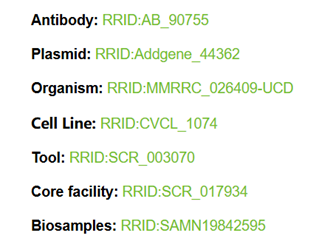
AB_: Antibody Registry
Add gene_: Plasmid Collections
MMRRC_: Mutant Mouse Regional Resource Centers
CVCL_: Cellosaurus
SCR_: SciCrunch Registry
For research resources not currently within the RRID scope (e.g., small molecule compounds, proteins), use relevant database identifiers or standard citation formats such as PubChem SID or UniProtKB ID.
How to Use RRIDs
The RRID query portal is: https://scicrunch.org/resources. This site aggregates RRIDs and standardized citation text for key biological reagents and resources from the most authoritative data sources for each resource type. Search by resource name or catalog number to find the corresponding RRID. If a resource is not found, it may not yet be registered; users can self-register it to obtain an official RRID after approval.
Example:
· The homepage features six resource categories. Click the relevant category to access the query system (Figure 1).
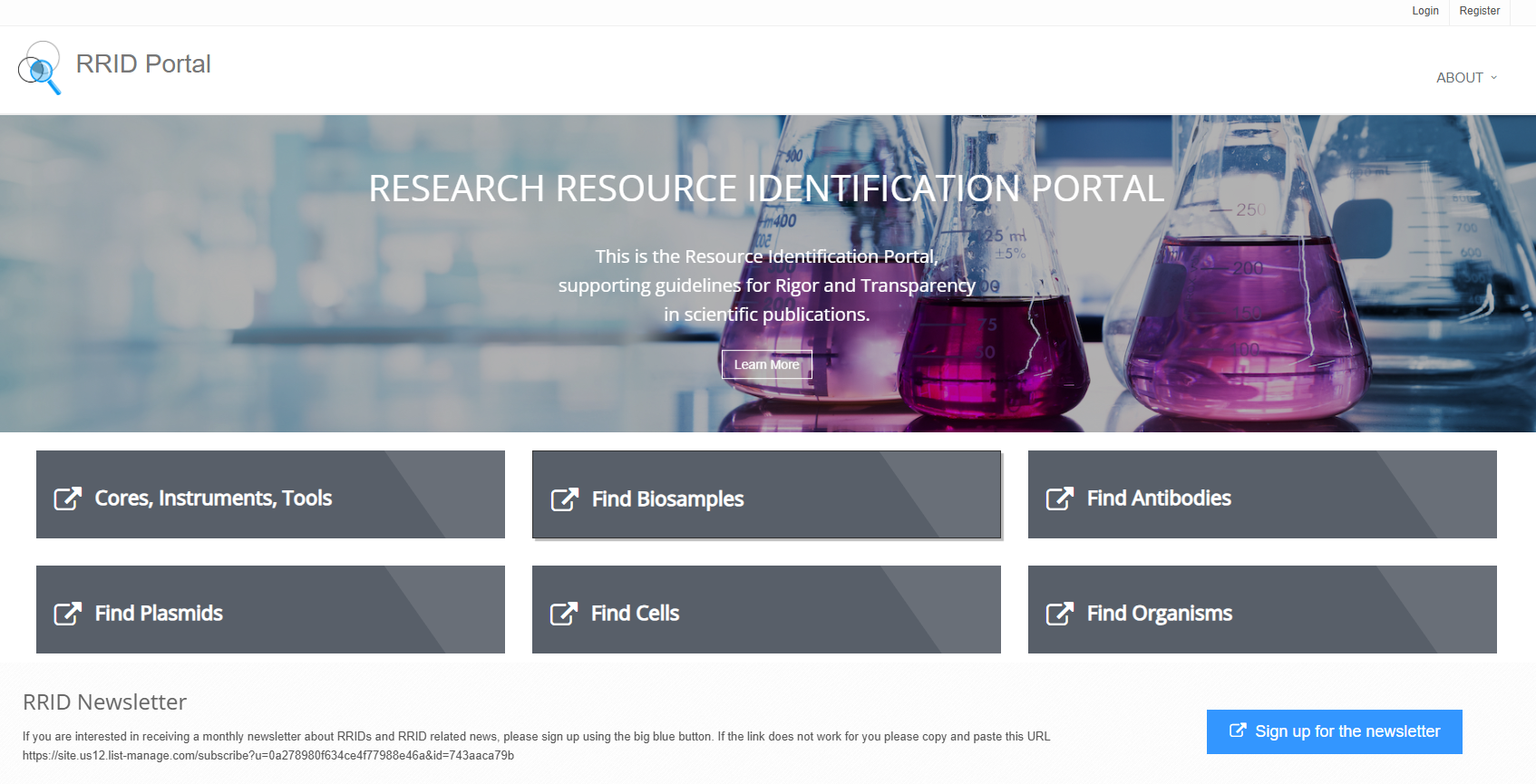
Figure 1. RRID Portal Homepage
· Query: Using the Antibody category as an example, enter catalog number PVV13201 and click Search to retrieve the antibody's RRID and standardized citation text (Figure 2). Click the entry to view detailed information about the antibody (Figure 3). Searches can also be performed by brand or target to find resources with existing RRIDs. Advanced search options are available.
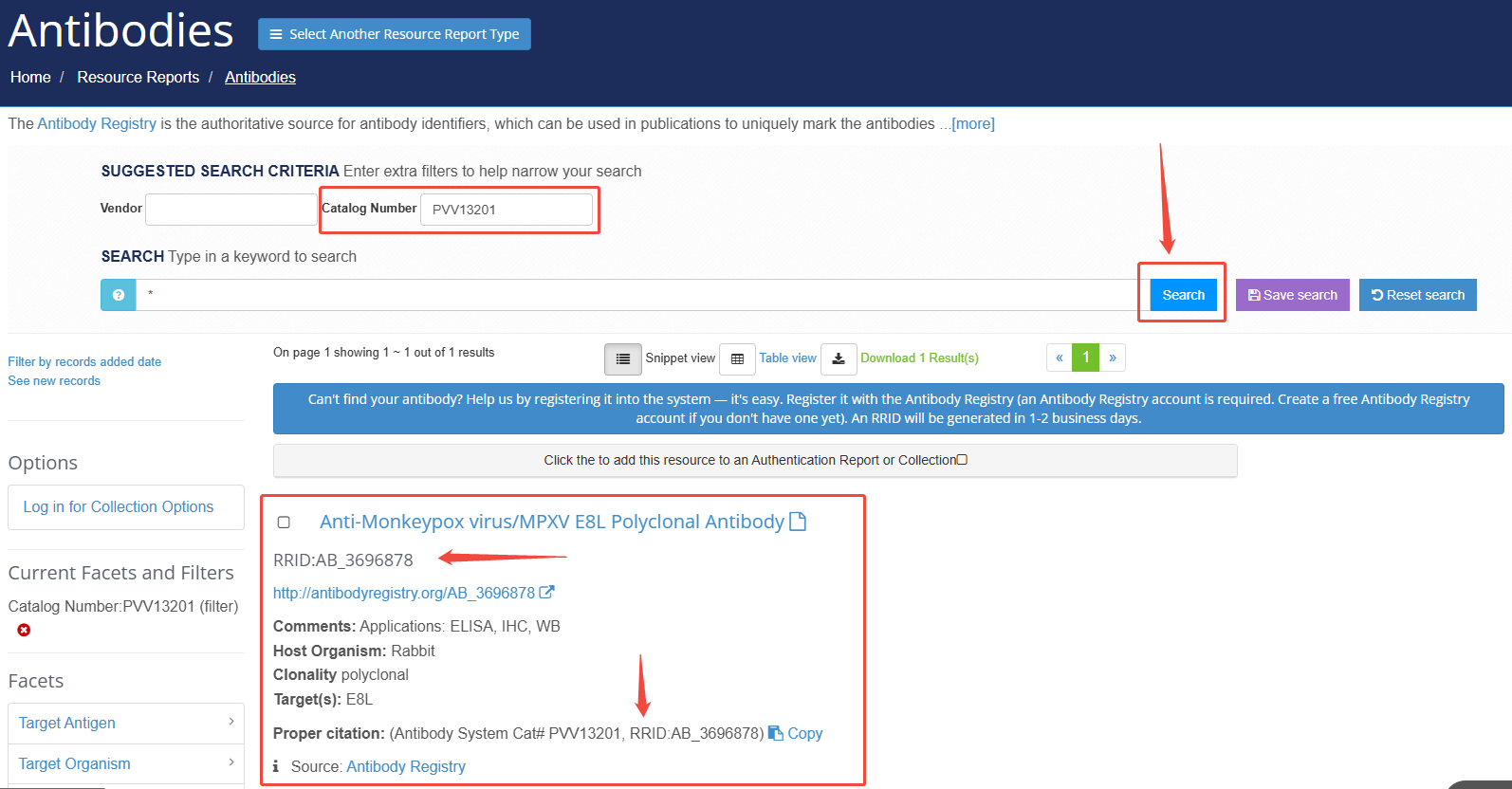
Figure 2. Query Example
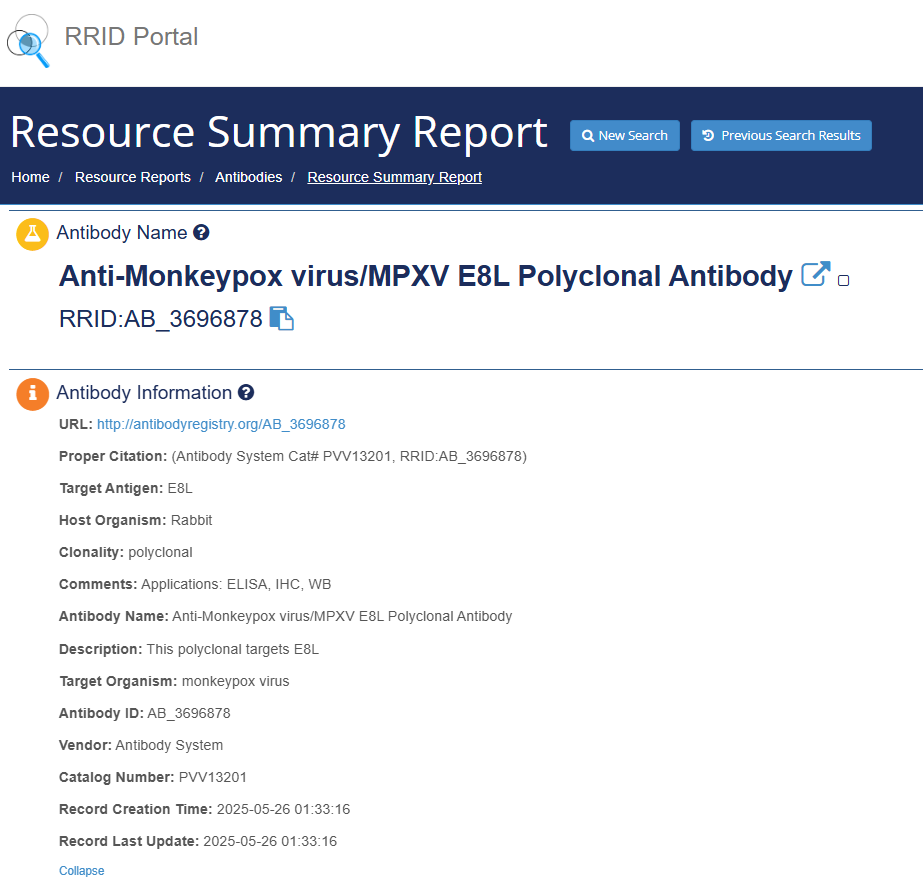
Figure 3. Antibody Details
· Create: If no RRID is found, self-register the resource: Click About > Add a resource or the blue prompt at the bottom of the page (e.g., "Register an antibody now"). Complete and submit the required information (Figure 4). Antibodies can also be queried or registered directly via the Antibody Registry: https://www.antibodyregistry.org/ (Figure 5). Upon approval, the RRID and standardized citation text will be assigned.
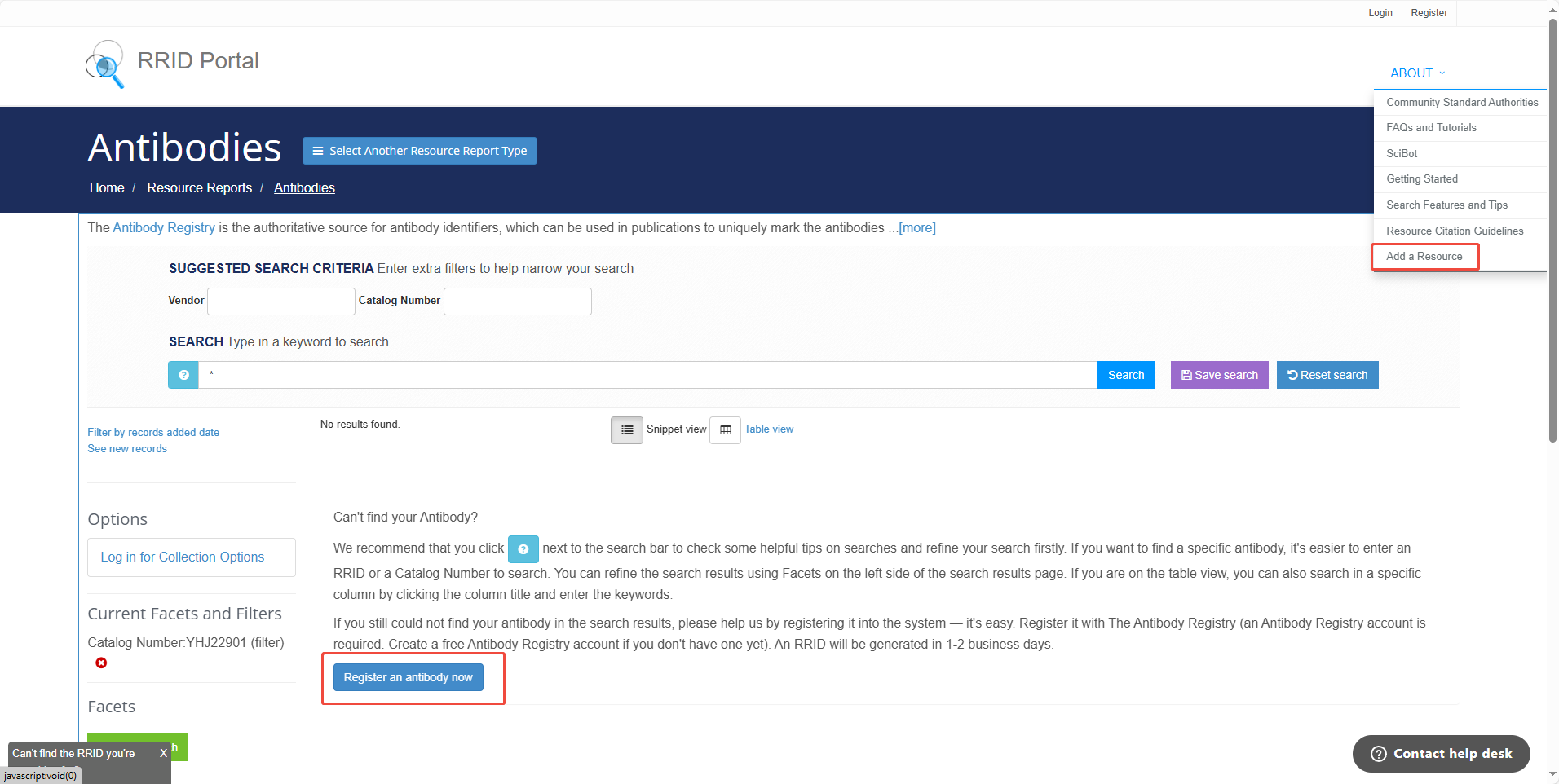
Figure 4. Self-Register an RRID
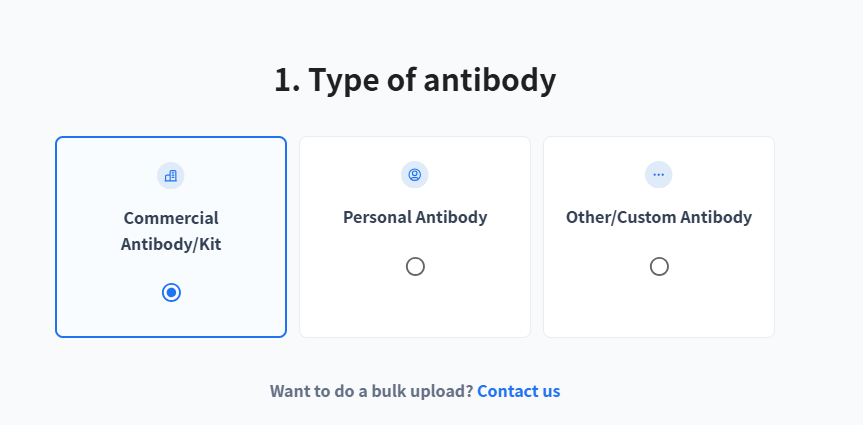
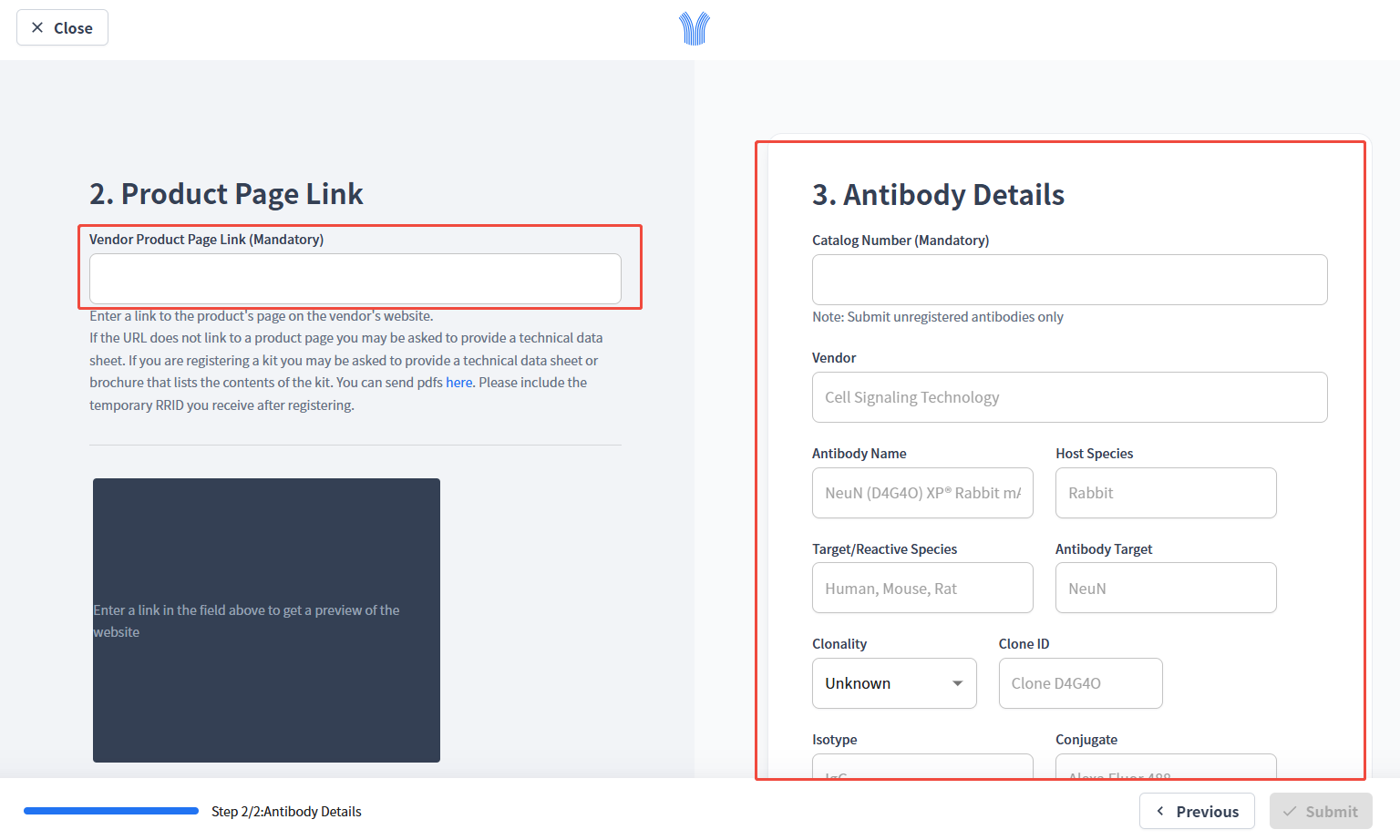
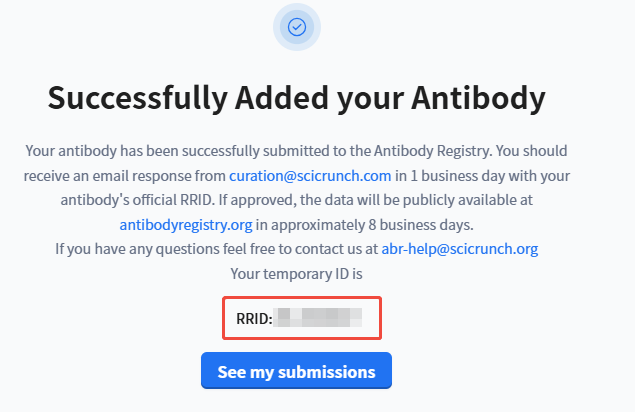
Figure 5. Antibody Registry Registration
